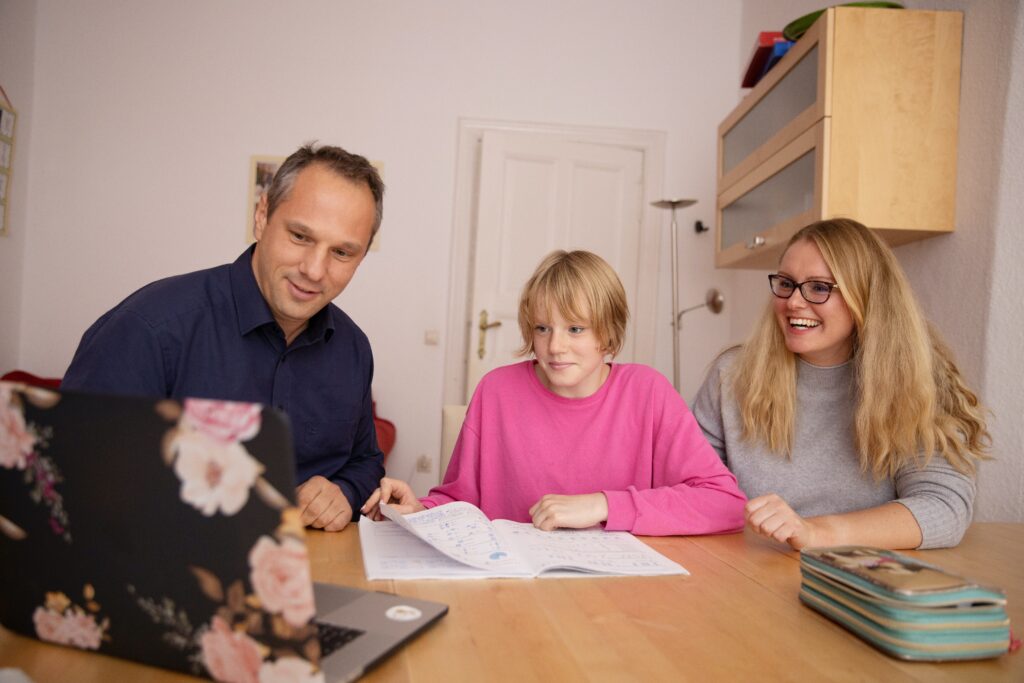
COVID-19 significantly affected access to mental health support, including for people with eating disorders. During the pandemic, at least half of the people with eating disorders reported a decline in treatment access (Termorshuizen et al., 2023; to learn more, read Georgie’s blog on experiences of disordered eating during the pandemic). Treatment access is especially important for children and young people, as it is estimated that around 5.5-17.9% of young women and 0.6-2.4% of young men worldwide will have experienced an eating disorder by early adulthood (Silén & Keski-Rahkonen, 2022).
As a result of the limited availability of treatment, telemedicine (diagnosis and treatment of patients through telecommunications technology) has become an increasingly popular method of delivering treatments for eating disorders. In comparison to in-person treatments, telemedicine is more easily accessible, flexible, and associated with reduced costs (Gorrell et al., 2022). Read Philip Clery’s blog on the Mental Health PRU Telemental Health work for a good introduction to this area.
Many treatments are known to be effective for treating eating disorders, including cognitive behavioural therapy, psychotherapy and cognitive remediation therapy (Couturier et al., 2020). For children and young people, family-based therapy (FBT) is considered to be one of the best approaches (Gorrell et al., 2019). FBT focuses on empowering a patient’s family to intervene with eating disorder symptoms early in treatment, followed by the gradual increase of a patients’ independence (Dalle Grave et al., 2019). However, there are many barriers that prevent access to this treatment, including long waiting times and extensive training needed for clinicians to deliver FBT (Murray & Le Grange, 2014). Finding a way to deliver FBT using telemedicine may provide an opportunity to overcome some of these challenges, which is exactly what a recent study by Dori Steinberg and colleagues (2023) attempted to do.

Due to its efficacy, family-based therapy (FBT) is considered to be the treatment of choice for children and young people with eating disorders.
Methods
The study used a pre-post cohort design to observe 210 young people, aged 6-24 years old and diagnosed with an eating disorder, who received treatment over a 12-month period. Like traditional FBT, the care team (including a licensed therapist, dietitian, and medical provider) met with the family weekly for a 50-minute treatment session. Unlike traditional FBT, all sessions took place online through video calls, and the care team took an enhanced multidisciplinary approach by also including two individuals with lived experience: a peer mentor who recovered from an eating disorder and a family mentor who has supported a family member to recover from an eating disorder.
The effectiveness of online FBT was measured across several variables:
- Weight, which was measured at home by a family member
- Eating disorder symptom severity, measured using the Eating Disorder Examination-Questionnaire Short Form (EDE-QS)
- Food restriction, measured using the Nine Item Avoidant/Restrictive Food Intake Disorder Screen (NIAS)
- Depression, measured using the Patient Health Questionnaire (PHQ-9)
- Anxiety, measured using the Generalized Anxiety Disorder Questionnaire (GAD-7)
- Caregiver burden, measured using the Burden Assessment Scale (BAS)
- Caregiver self-efficacy, measured using the Parent Versus Eating Disorder (PVED) scale
- Treatment acceptability and satisfaction, measured using a Net Promoter Score (NPS) which asked on a scale of 1-10 how likely the caregiver or patient was to recommend the treatment to others.
Two linear mixed effects models were used to show the different trajectories of patients following online FBT. Both weekly changes and mean differences from beginning to the end of 16 weeks of online FBT were reported.
Results
About 1 in 3 of the 210 included participants completed at least 16 weeks of online FBT. Participants were diagnosed with anorexia nervosa (94%), bulimia nervosa (1%), binge eating disorder (2%), or otherwise-specified feeding and eating disorder (2%).
Outcomes
- Weight: Treatment was significantly associated with half a pound weekly weight gain for those not on a weight restoration plan (B = .51, CI 0.26 to 0.75, p = .03). Patients on a weight restoration plan gained 1 pound weekly (B = 1.09, CI 0.99 to 1.18, p < .001) and 80% of them reached 95% of the target weight by 16 weeks.
- Eating disorder symptom severity: Scores showed significant weekly decrease across treatment (B = −. 59, CI −0.74 to −0.45, p < .001).
- Depression and anxiety: Both symptoms showed weekly decline, but only anxiety (B = −.32, CI −0. 50 to −0. 16], p < .001), not depression (B = -.19, CI -0.31 to -0.07], p-value unreported), was significant.
- Caregiver burden and self-efficacy: Caregiver self-efficacy significantly increased across treatment (B = .54, CI 0.45 to 0.62, p < .001), and although caregiver burden also showed change, the decline was not significant (B = −.16, CI −0. 33 to 0.02], p = .059).
- Treatment acceptability and satisfaction: Scores did not change over the course of treatment.

This study found that 80% of participants with eating disorders receiving online family based therapy (in combination with a weight restoration plan) reached 95% of their target weight in 16 weeks.
Conclusions
According to this non-randomised study, family-based therapy (FBT) for eating disorders, delivered online with a multidisciplinary team, appears to be an effective approach for addressing eating disorders in children and young people, showing significant increases in weight gain and reductions in eating disorder and anxiety symptom severity.
It also shows promise for caregiver outcomes, such as reductions in caregiver burden and improvements in self-efficacy.
These results signal that it may be possible to adapt FBT for online delivery and still produce clinically meaningful outcomes.

A telemedicine approach to FBT for eating disorders shows promise for children and young people, as well as their caregivers.
Strengths and limitations
This study had several strengths, including clearly focused research aims on examining the efficacy of online FBT, and using clinically validated measurement instruments to assess patient and caregiver improvement. Additionally, the described treatment extended traditional FBT by focusing on a multidisciplinary care team, including both medical professionals alongside the help of peer and family mentors. Furthermore, although the study did not examine differences between traditional and online FBT, the same follow-up duration of 16 weeks was used, which provides the opportunity to compare some of the findings with recent studies (Agras et al., 2014; Doyle et al., 2010).
However, there are some important limitations which need to be considered:
- The study used a pre-post observational cohort design (not a randomised controlled trial design), which significantly limits how much can be said regarding intervention effectiveness.
- Only 32% of included participants completed at least 16 weeks of FBT. Of those who left the study, 30% needed additional, higher-level care and 42% were discharged against medical advice. This large drop-out rate could indicate attrition bias, as participants who dropped out seemed to have more severe symptoms, and their exclusion could have influenced results.
- Selection bias may have occurred, as participants needed consistent access to the internet and had to pay for treatment, meaning participants of lower socioeconomic status (SES) may have been excluded. As SES was not measured, this could not be investigated further.
- Although the study was open to children and young people with any eating disorder, 94% of participants were diagnosed with anorexia nervosa, limiting the generalisability of findings to other types of eating disorders.
- Some participants received additional treatment prior to online FBT, such as inpatient care or intensive outpatient programs. The level and frequency of prior care might have influenced how people respond to online FBT (Le Grange et al., 2012), however this was not included as a moderator in analyses.
- Overall duration of treatment, alongside frequency of care team meetings (and with which members), was unclear. This lack of clarity makes results difficult to interpret and reduces replicability.
- Finally, although the study emphasised the multidisciplinary element of online FBT, its effects were not further examined. Given findings from previous research, examining this in further depth would have been valuable, especially the impact of peer and family mentors on outcomes.

The addition of peer and family support to online family-based therapy (FBT) for children and young people with eating disorders should be further examined.
Implications for practice
This research presents novel findings relating to online FBT for children and young people with eating disorders, indicating its potential to aid weight gain, reduce eating disorder and anxiety symptom severity, and improve caregiver self-efficacy. These findings emphasise the potential utility of online FBT within clinical practice, and the possibilities for addressing long waiting times and clinician availability. In addition, traditional FBT was extended by the provision of support from peer and family mentors, highlighting the potential for integrating lived experience perspectives alongside medical expertise within online FBT.
However, further evidence is still needed. The pre-post observational cohort design used in this study, along with the very high drop out rates, make the findings unreliable, and difficult to interpret in any way that can influence practice. Looking to the future, researchers should consider comparing online FBT to traditional FBT, using a randomised controlled trial design to better address questions of safety and effectiveness. Nesting a qualitative study within this larger, quantitative design could also allow the exploration of satisfaction and effectiveness of treatment from the perspectives of multiple stakeholders, including patients, caregivers, and practitioners. This appears essential, as different stakeholders may experience and benefit differently from delivering treatment online.
For example, during the COVID-19 pandemic, online FBT was delivered by the treatment center at which I am employed (GGZ Rivierduinen Eating Disorders Ursula). Although being able to continue treatment appeared quite helpful for most patients, practitioners/my colleagues noticed that some patients appeared less motivated and experienced a sense of disconnection during online treatment (Monteleone et al., 2021). Additionally, whilst caregivers appreciated not having to travel for treatments, there was still an increased sense of burden (Maunder et al., 2021). Practitioners/my colleagues also reported that they experienced a reduced sense of connection with patients, that providing online treatments could be quite exhausting (especially on a daily basis), and that it was difficult to assess the physical state of patients (Shaw et al., 2021). This again suggests that a multidisciplinary team focus, including medical providers to assess physical state as well as the inclusion of peers, for increased connection and motivation in patients, might be important when delivering virtual FBT.

Although these results are promising, it’s essential that we have reliable randomised evidence directly comparing online FBT with traditional face-to-face FBT.
Statement of interests
None.
Links
Primary paper
Steinberg, D., Perry, T., Freestone, D., Bohon, C., Baker, J. H., & Parks, E. (2023). Effectiveness of delivering evidence-based eating disorder treatment via telemedicine for children, adolescents, and youth. Eating Disorders, 31(1), 85-101. https://doi.org/10.1080/10640266.2022.2076334
Other references
Agras, W. S., Lock, J., Brandt, H., Bryson, S. W., Dodge, E., Halmi, K. A., Jo, B., Johnson, C., Kaye, W., & Wilfley, D. (2014). Comparison of 2 family therapies for adolescent anorexia nervosa: a randomized parallel trial. JAMA Psychiatry, 71(11), 1279-1286. https://doi.org/10.1001/jamapsychiatry.2014.1025
Couturier, J., Isserlin, L., Norris, M., Spettigue, W., Brouwers, M., Kimber, M., McVey, G., Webb, C., Findlay, S., & Bhatnagar, N. (2020). Canadian practice guidelines for the treatment of children and adolescents with eating disorders. Journal of Eating Disorders, 8(1), 1-80. https://doi.org/10.1186/s40337-020-0277-8
Dalle Grave, R., Eckhardt, S., Calugi, S., & Le Grange, D. (2019). A conceptual comparison of family-based treatment and enhanced cognitive behavior therapy in the treatment of adolescents with eating disorders. Journal of Eating Disorders, 7, 1-9. https://doi.org/10.1186/s40337-019-0275-x
Doyle, P. M., Le Grange, D., Loeb, K., Doyle, A. C., & Crosby, R. D. (2010). Early response to family-based treatment for adolescent anorexia nervosa. International Journal of Eating Disorders, 43(7), 659-662. https://doi.org/10.1002/eat.20764
Gorrell, S., Loeb, K. L., & Le Grange, D. (2019). Family-based treatment of eating disorders: A narrative review. Psychiatric Clinics, 42(2), 193-204. https://doi.org/10.1016/j.psc.2019.01.004
Gorrell, S., Reilly, E. E., Brosof, L., & Le Grange, D. (2022). Use of telehealth in the management of adolescent eating disorders: patient perspectives and future directions suggested from the COVID-19 pandemic. Adolescent Health, Medicine and Therapeutics, 45-53. https://doi.org/10.2147/AHMT.S334977
Le Grange, D., Lock, J., Agras, W. S., Moye, A., Bryson, S. W., Jo, B., & Kraemer, H. C. (2012). Moderators and mediators of remission in family-based treatment and adolescent focused therapy for anorexia nervosa. Behaviour Research and Therapy, 50(2), 85-92. https://doi.org/10.1016/j.brat.2011.11.003
Maunder, K., & McNicholas, F. (2021). Exploring carer burden amongst those caring for a child or adolescent with an eating disorder during COVID-19. Journal of Eating Disorders, 9(1), 1-8. https://doi.org/10.1186/s40337-021-00485-7
Monteleone, A. M., Cascino, G., Barone, E., Carfagno, M., & Monteleone, P. (2021). COVID-19 pandemic and eating disorders: What can we learn about psychopathology and treatment? A systematic review. Current Psychiatry Reports, 23, 1-15. https://doi.org/10.1007/s11920-021-01294-0
Murray, S. B., & Le Grange, D. (2014). Family therapy for adolescent eating disorders: an update. Current Psychiatry Reports, 16, 1-7. https://doi.org/10.1007/s11920-014-0447-y
Shaw, H., Robertson, S., & Ranceva, N. (2021). What was the impact of a global pandemic (COVID-19) lockdown period on experiences within an eating disorder service? A service evaluation of the views of patients, parents/carers and staff. Journal of Eating Disorders, 9, 1-11. https://doi.org/10.1186/s40337-021-00368-x
Silén, Y., & Keski-Rahkonen, A. (2022). Worldwide prevalence of DSM-5 eating disorders among young people. Current Opinion in Psychiatry, 35(6), 362-371. https://doi.org/10.1097/YCO.0000000000000818
Termorshuizen, J. D., Sun, Q., Borg, S., Mantilla, E. F., Goode, R. W., Peat, C. M., Thornton, L. M., Watson, H., van Furth, E. F., & Birgegård, A. (2023). Longer-term impact of COVID-19 among individuals with self-reported eating disorders in the United States, the Netherlands, and Sweden. International Journal of Eating Disorders, 56(1), 80-90. https://doi.org/10.1002/eat.23824
Photo credits
- Photo by John Schnobrich on Unsplash
- Photo by sofatutor on Unsplash
- Photo by Piret Ilver on Unsplash
- Photo by Natalie Pedigo on Unsplash
- Photo by Priscilla Du Preez on Unsplash
- Photo by Lina Trochez on Unsplash
